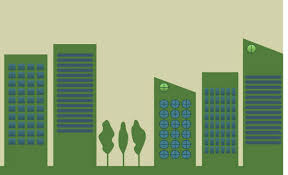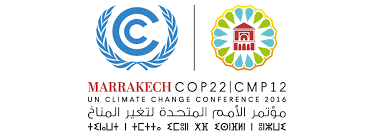Member Policy Update
Welcome to the Europe Regional Network’s December 2016 Policy Update, providing GBC members with the latest news on all things relating to European green building policy. This update will focus heavily on the key elements of the Winter Package.
Commission unveils much anticipated Winter Package
On 30 November, the European Commission presented a package of legislative proposals aimed at progressing plans for the transition to an energy efficient and low-carbon economy. The “Clean Energy for All Package” aims to assist the EU in cutting CO2 emissions by at least 40%. It is centred around three main goals:
- Putting energy efficiency first – in buildings, industry, through, eco-design), innovation and transport
- To establish a common power market design across the European Union
- To facilitate better integration of electricity produced from renewable sources into the market and ensuring the sustainability of bioenergy
There are 8 legislative proposals in the package, accompanied by a large number of other official policy documents, covering a wide range of issues such as energy efficiency, renewable energy, the design of the electricity market, security of electricity supply and governance rules for the Energy Union.
The whole package will shape the European Union’s climate and energy legislation beyond 2020. Points of particular interest to GBCs and their members will be measures in the package aimed at increasing the energy efficiency savings target to 30% by 2030, the revised Energy Performance of Buildings Directive (EPBD), a revised Energy Efficiency Directive (EED) and the communication on smart buildings. Further details on key aspects of the package are shown below.
Energy Efficiency Directive
The revised Energy Efficiency Directive (EED) aims to put the principle of “Energy efficiency first” into practice. The proposed directive puts forward a binding energy efficiency target of 30% for 2030 at EU level, to provide Member States and investors with long term certainty to plan their policies and investments.
The 30% target will be underpinned by dedicated policies at an EU, national and regional level. The Commission expects that the target represents a drop in final energy consumption of 17% compared to 2005 and will lead to an increase in GDP of around 0.4% (€70 billion).
The EED proposal extends the annual energy savings obligations (of 1.5%) for Member States beyond 2020 and provides Member States with flexibility to use both energy efficiency obligation schemes and alternative measures to achieve this target. This is a critical component of the directive as around half of the additional savings that are needed to achieve a 30% energy efficiency target in 2030 are expected to come from the extension of this obligation.
The EED also considers the social aspects of energy efficiency by requiring that energy poverty be considered in designing energy efficiency obligation schemes and alternative measures.
The role of the consumer is also recognised as the EED makes provision to empower consumers as key players in the energy market by improving their access to information on their heating and cooling consumption and strengthening their rights in metering and billing of thermal energy.
Energy Performance of Buildings Directive (EPBD)
Energy efficiency is a key principle of the clean energy package and the main objective of the revised Energy Performance of Buildings Directive (EPBD) is to unlock the huge potential for efficiency gains in the building sector.
The buildings sector is the largest single energy consumer in Europe and accounts for 40% of final energy. Around 75% of buildings are energy inefficient and with an average renovation rate of 1% it would take around a century to decarbonise the building stock to low-carbon levels.
The main provisions in the new EPBD proposals are outlined below:
National Renovation Strategies
Member States must establish long-term national renovation strategies to deliver on the long-term 2050 goal to decarbonise their national building stock, with specific milestones for 2030.
The new EPBD also proposes that financial incentives for energy efficiency should be linked to the depth of the renovation – assessed by comparing EPCs before and after renovation.
To guide investment decisions for renovations, Member States must introduce mechanisms for:
- Aggregation of projects, to make it easier for investors to fund the renovations
- De-risking energy efficiency operations for investors and the private sector
- Using public funds to leverage additional private-sector investment or address specific market failures
Member States must also consider the issue of energy poverty and supporting financing of building renovations.
The annex to the communication on “Accelerating clean energy in buildings” provides further details on these objectives.
Smartness Indicator
The introduction of a “Smartness Indicator” in the EPBD will assess the readiness of the building to adapt its operation to the needs of the occupant and of the grid.
The smartness indicator aims to raise awareness of building owners and occupants of the value of building automation and electronic monitoring of technical building systems. It will also give confidence to the occupant about the actual savings of these new enhanced-functionalities.
The indicator will cover flexibility features, enabling occupants and the building itself to react to comfort or operational requirements, take part in demand response and contribute to the operation of the various energy systems and district infrastructures to which the building is connected
Electro-mobility infrastructure
Under the revised EPBD, requirements for electro-mobility have been introduced. This means that from 2025, new non-residential buildings with more than ten parking spaces, and non-residential buildings with more than ten parking spaces undergoing major renovation must equip one parking space per ten for electro-mobility.
New residential buildings with over ten parking spaces, and those undergoing major renovation, must put in place the pre-cabling for electric recharging.
Member States have the option to exempt buildings owned and occupied by SMEs, as well as public buildings covered by the Alternative Fuels Infrastructure Directive.
Building automation and energy monitoring systems
Currently, under Article 14 and 15 of the EPBD, regular inspection of heating and air conditioning systems are required to ensure that buildings operate efficiently over time.
However, these have not proven to be cost effective it is proposed that building automation and energy monitoring systems are a cost-effective alternative to regular inspections.
Communication on Accelerating clean energy in buildings
The annex to the communication on “Accelerating clean energy in buildings” outlines a series of measures to complement actions outlined in both the EED and the EPBD. A key element of this is the “Smart finance for smart buildings initiative” which recognises that renovation in buildings is an area where pooling of projects and public guarantees is key.
The European Fund for Strategic Investments (EFSI) has been critical in unlocking private financing for energy efficiency and renewable in buildings at greater scale. Building on the success of EFSI, the Commission has proposed to extend its duration until 2020.
The Commission also will launch a new initiative (in cooperation with the European Investment Bank (EIB) and the Member States) which aims to unlock an additional EUR 10 billion of public and private funds until 2020 for energy efficiency and renewable.
The Commission has identified 3 pillars to unlock this potential:
Pillar I More effective use of public funds
The Commission will focus on developing sustainable energy financing models based on national investment platforms to attract finance for building renovation.
To address the issue of banks not traditionally recognising energy efficiency as market segment, the Commission has developed the Private Finance for Energy Efficiency (PF4EE) facility, funded by the LIFE Programme and managed by the EIB. The Commission will apply lessons learnt from PFEE to support the development of flexible energy efficiency and renewable financing platforms at national or regional level.
These platforms will provide a full-service solution enabling local banks, financial intermediaries, energy service companies or other entities pooling investments to deploy attractive sustainable energy financing products.
Recognising the role of energy performance contracting in driving the efficiency of public buildings, the Commission is analysing the impact of public accounting rules on the market for energy performance contracting and will update its guidance before late spring 2017.
In support of assisting public fund managers with the structuring and deployment of financial instruments, the Commission will organise a series of regional capacity building events involving with key stakeholders.
Pillar II: Aggregation and assistance for project development
Many project developers lack the skills and capacity to set up, implement and finance clean energy building projects. Therefore, the commission will:
- Reinforce existing Project Development Assistance facilities at the EU level such as ELENA (European Local ENergy Assistance) in cooperation with the European Investment Advisory Hub.
Support locally developed project pipelines by encouraging Member States to develop dedicated local or regional one-stop shops for project developers
Pillar III: De-risking
To facilitate market transformation, the Commission will launch the De-Risking Energy Efficiency Platform disclosing the technical and financial performance of over 5,000 European industrial and buildings energy efficiency projects.
The commission will co-produce an initiative with the Energy Efficiency Financial Institutions Group initiative looking at a consensual framework for the underwriting of sustainable energy building investments.
Supporting the Construction Sector
This Communication also outlines way in which the construction sector can be supported in tackling the challenges presented by sustainable energy building investments.
One such initiative will be developing synergies with the Commission “BUILD UP Skills” initiative, which focuses on upskilling of construction sector workers on energy efficiency.
The Commission also states that the EU sustainable buildings framework should be used to promote circular economy in the built environment, including by being used as a reference in large scale application projects, in European Structural and Investment Funds and in national policy and legislation.
More information on the Winter Package
In addition to these key policies, several other proposals in the Winter Package will also be of relevance to the buildings sector. These are listed below:
Eco-design Directive – In parallel with the review of existing regulations on eco-design, the Commission will be launching dedicated studies for products that have the largest savings potential including Building Automation and Control Systems.
Renewable Energy Directive – This proposes a new calculation methodology of minimum levels of energy from renewable sources in new buildings and existing buildings that are renovated. This directive also includes obligations for renewable energy use in heating and cooling.
The RED also looks at the requirements for the sustainability criteria of biomass by extending their scope to cover biomass and biogas for heating and cooling and electricity generation.
In addition, the GHG saving performance requirement applying to biofuels is increased to 70% for new plants and an 80% saving requirement is applied to biomass-based heating/cooling and electricity. However, these requirements do not apply to small biomass-based heating/cooling and electricity installations, with a fuel capacity below 20 MW
Communication on Accelerating Clean Energy Innovation – To make the EU the world leader in clean energy solutions, funding from the EU budget will focus on disruptive innovation, incremental innovation and several targeted high-impact projects.
The Commission will look at ways to strengthen existing bottom-up approaches to innovation under Horizon 2020 and explore other mechanisms, including a potential European Innovation Council.
Additionally, more than EUR 2 billion from the Horizon 2020 work programme for 2018-2020 will support research and innovation projects in 4 areas, one of which is “Decarbonising the EU building stock by 2050: from nearly-zero energy buildings to energy-plus districts”.
Further details on all elements of the package can be found on the Commission’s website.
Commission launches new database on the energy performance of buildings
On 06 December, the Commission launched the EU Building Stock Observatory – which will monitor the energy performance of buildings across Europe.
The database provides information on buildings’ characteristics including their construction period, energy use, onsite renewable energy and renovation rates.
The observatory will track energy performance levels in buildings in individual EU countries and the EU as a whole. It will include information on different energy certification schemes, how they are implemented and energy poverty levels across the EU.
Europe on track to meet 2020 climate change targets
On 1 December, the European Environment Agency (EEA) announced that EU countries are on track to meet their 2020 targets for renewables, energy efficiency and greenhouse gas emissions. This analysis is included in the report ‘Trends and Projections in Europe 2016: Tracking progress towards Europe climate and energy targets’.
Although the EU is set to meet targets for 2020, there is cause for alarm in certain sectors, particularly transport as greenhouse gases are rising in this sector again. Further, the analysis cautions that to achieve goals set by the EU for 2030 and 2050, current efforts must be considerably stepped up.
In their analysis, the EEA said that meeting the energy efficiency target by 2030 is achievable but would need “effective implementation of energy efficiency measures as well as a rapid change in consumer behaviour”.
The EEA report is supported by country profiles which provide detail at national level on energy and climate data.
ZEBRA 2020 – Nearly Zero-Energy Building Strategy 2020
Over the past three years, the EU-funded project ZEBRA2020 has monitored the market uptake of nearly zero energy buildings (nZEBs) across Europe. A final report of the project has highlighted the key actions that need to be taken to reach the nearly zero energy building standard (nZEB) by 2020.
Using an online tracker to monitor the market uptake of nZEBs across Europe, the project has provided data and knowledge on how to reach the nZEB standard.The analysis has shown a substantial gap of market maturity that still must be closed by 2019/2021. To close this gap, the report outlines a series of barriers and recommendations that can be implemented at both national and EU level. These include:
- Implementing a common, shared long-term vision for the building stock
- Improving nZEB compliance monitoring and sanctions regimes in Member States
- Transforming EPCs into Building Certificates (“Passes”) for the whole lifetime of a building
- Acknowledging the issue of energy poverty and vulnerable consumers across Europe and shifting from an approach of fuel subsidy to energy efficiency support
- Ensuring that a revised nZEB definition is future proofed so that buildings become highly-efficient micro energy-hubs consuming, producing, storing and supplying energy.
More information about this project can be found at www.zebra2020.eu
Members of European Parliament Approve Air Pollution Law
On 23 November, Members of European Parliament (MEPs) met in Strasbourg and approved new EU-wide air pollution rules which are expected to halve the health impact of air pollution by 2030, compared to 2005 levels.
The updated National Emissions Ceilings (NEC) sets out national emission reduction commitments for sulphur dioxide (SO2), nitrogen oxides (NOx), non-methane volatile organic compounds (NMVOC), ammonia (NH3), and fine particulates. However, there are concerns in some quarters that the bill has been watered down and therefore will not have as much impact as originally intended.
The vote was passed on the same day that a report by the European Environment Agency (EEA) said that almost 90% of European city dwellers breathe air that is harmful to their health and that the number of premature deaths linked to air pollution in the EU every year is estimated at 400,000.
Member States will now have to develop air pollution plans showing how they plan to fulfil the new limits. These will be updated regularly based on public consultations.
COP22 concludes in Marrakech
On 18 November, COP22 concluded in Marrakech, Morocco. The focus of COP22 was on the implementation of the Paris Agreement as opposed to COP21, which focused on securing an agreement.
After intense discussions over two weeks, delegates agreed the adoption of thirty-five decisions, establishing a detailed plan for moving forward to implementation of the Paris Agreement. It was also decided that all preparatory work for implementation should be completed by 2018, with a progress review in 2017.
Other key outcomes of the conference include:
- Nations held the first meeting of the Parties of the Paris Agreement (called CMA1); the biggest decision was to signal their intent to bring a major fund for climate change adaptation under the accord.
- The launch of two major initiatives, the NDC Partnership and the Capacity-Building Initiative for Transparency, to help developing countries fulfil the goals of the agreement.
- Canada, Germany, Mexico and the U.S. releasing visions for decarbonising their economies by 2050.
- A group of 47 developing countries pledged to transition their economies to run entirely on renewables, and to make the switch by 2030-2050.
WorldGBC were present in Marrakech and attended Buildings Day which focused on uniting countries, companies, cities, Green Building Councils and other organisations from around the world to galvanise action and support for green building as a critical solution to combat climate change.
New study highlights the growth of green bonds and signals their potential in financing Europe’s climate goals
On 2 December, the European Commission released a study on the potential of green bond finance for resource-efficient investments.
In the study, the Commission outlined that, globally, green bonds mainly finance projects within renewable energy (46% in 2015), energy efficiency (20%), low carbon transport (13%), sustainable water (9%), and waste & pollution (6%).
The study finds that the demand for green bonds has grown significantly as pension funds and insurance companies diversify their investment portfolios. In 2015, the total issuance of green bonds was USD 41.8 bn -this figure had reached USD 65.4 by November 2016.
Despite this rapid growth, globally the green bond market still only represents a small share (around 0.13%) of the bond market. Therefore, there is a huge potential for unlocking further growth, which could contribute to the EU’s 2030 climate and energy objective.
The study has identified five key bottlenecks that could hamper the further growth of the green bond market:
Lack of green bonds and green project pipelines
Lack of aggregation mechanisms for green projects
Lack of green bonds definition and framework
Lack of information and market knowledge
Lack of aggregation mechanisms for green projects
The study does however find that there are many good practices in EU Member States to overcome these limitations. Examples include ‘soft measures’ such as raising awareness and capacity building to more stringent approaches such as mandatory disclosure of green indicators for bond issuances and investments.
Spotlight on RenoWiki
Each month, energy efficiency initiatives from across Europe which have been uploaded to the RenoWiki will be featured here. Subscribers are invited to explore these initiatives, explore the RenoWiki and submit their own initiatives.
This month we do not have one favourite initiative, but 24, as the United Kingdom has joined the RenoWiki! This is a fantastic achievement and demonstrates the commitment of our colleagues in the UK to collaborating with European colleagues to sharing solutions to overcome the renovation challenge.
The UK RenoWiki pages shows some great iniatives from the LENDERS Green mortgages project to the Care and Repair Cymru charity which links home energy efficiency works with health services.





